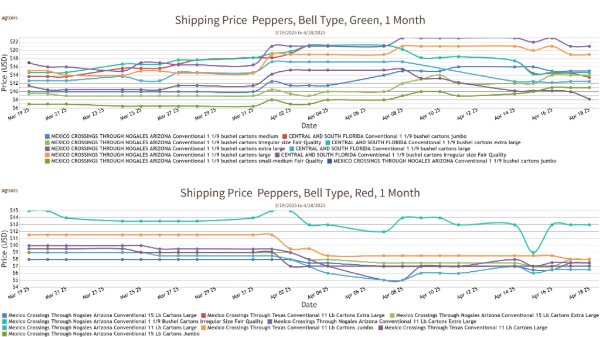Welcome to Blue Book!
Are you ready to join the thousands of companies who rely on Blue Book to drive smarter decisions? View our plans and get started today!
Still have questions? We’d love to show you what Blue Book can do for you. Drop us a line– we’ve been waiting for you.

Fresh produce companies are dealing with an ever-increasing alphabet soup of regulatory, technological, and strategic acronyms. One way to address the situation is to improve information sharing and product flows. The Global Data Synchronization Network (GDSN) enables trading partners to automatically share business data. Established by GS1, the international organization that led to the use of bar codes worldwide, GDSN is an automated standards-based global environment that enables secure and continuous data synchronization, allowing trading partners to have consistent item data in their systems. The intent is to streamline supply chain transactions and reduce costs.
Building Blocks
Like any network, the GDSN is an interconnected system of resources used to transmit and receive information. This network connects data sources and recipients to the GS1 Global Registry via data pools. Each organization plays a key role in data synchronization.
Data sources are the supply-side senders (publishers) of product information and the responsible party for the accuracy of these attributes. Data recipients are the demand-side receivers (subscribers). In the fresh produce supply chain, brand owners, packers, agricultural cooperatives, and other produce sellers are data sources. Data recipients include retailers and foodservice distributors. Organizations that buy and resell fresh produce may have both roles.
“This initiative is customer-driven and focuses on complying with customer mandates,” says Levi Fennell, implementation coordinator for RPE, Inc., a vertically-integrated potato and onion grower based in Bancroft, WI. “As we get more comfortable with GDSN,” he shares, it can be implemented “to make improvements on the procurement side.”
To engage in GDSN, a company must obtain a GS1 company prefix, which provides a globally unique identification number within the supply chain. The company prefix also serves as the foundation for assigning global locations numbers (GLNs) and global trade item numbers (GTINs) to products. The GLN allows a company to identify its locations and the GTIN allows the company to uniquely identify items and easily communicate information as the item moves through the supply chain. Both GLN and GTIN information can be encoded in a barcode or an electronic tag to improve supply chain efficiency and visibility.
Another essential building block of the network is a GDSN-certified data pool. A data pool serves as a standards-based repository for item information. Data pools store product attributes and supply chain information and provide a single point of entry for accessing the data. Often, data pool access is achieved through a cloud-based platform like the iTradeNetwork GDSN Data Pool, according to Ray Connelly, vice president of business development and Sudu Gupta, product manager for Master Data Services Solution. This global food and beverage industry data pool houses detailed information for more than 15 million products. It provides a network through which companies interact, publishing or subscribing to GS1-compliant product information. In addition to a GDSN certified data pool, iTradeNetwork also provides solutions for publishers and subscribers to manage, validate, and exchange the information.








